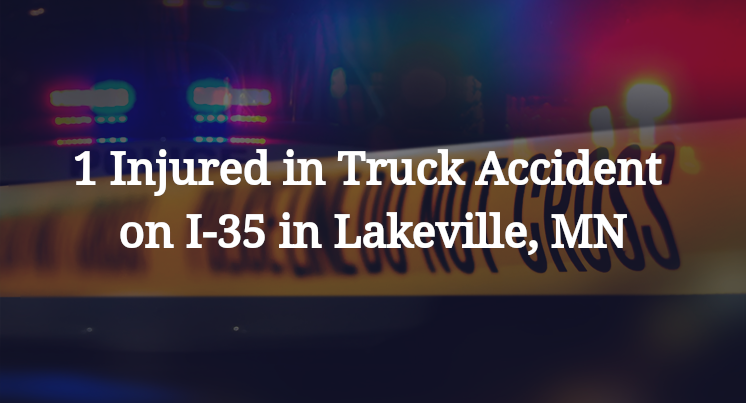1 Injured in Truck Accident on I-35 in Lakeville, MN
Lakeville, MN — April 25, 2025, one person was injured in a truck accident at about 2:25 p.m. on northbound Interstate 35.
Authorities said a Toyota Tundra collided with an Amazon delivery truck near 162nd Street, sending both vehicles into the concrete barrier on the left side of the highway.

The Toyota driver, a 20-year-old man from St. Cloud, was hospitalized with non-life-threatening injuries after the crash, according to authorities.
Authorities have not released any additional information about the Dakota County crash at this time. The accident is still under investigation.
Commentary by Attorney Michael Grossman
When a crash between a pickup truck and a commercial delivery truck results in both vehicles striking a concrete barrier, the key legal question is which driver created the unsafe condition that led to the collision. On a highway like I-35, where traffic is often heavy and fast-moving, small mistakes can quickly escalate into serious crashes.
According to initial reports, a Toyota Tundra and an Amazon delivery truck collided, pushing both into the median barrier. That suggests the impact was significant enough to cause a loss of control, which raises questions about lane position, speed and driver attentiveness on both sides.
One of the first things investigators should look at is how the Amazon truck was being operated. Commercial delivery drivers, even those operating smaller vehicles, are held to a higher standard because they are navigating public roadways in the course of their work. They must maintain safe lane discipline, check blind spots carefully and avoid sudden movements that can trap or sideswipe nearby vehicles. If the delivery truck initiated a lane change or merge without proper clearance, that would place responsibility squarely on the commercial driver.
At the same time, investigators will need to consider whether the Toyota driver contributed to the collision by changing lanes unsafely, speeding or lingering in a delivery truck’s blind spot. The roadway design — including whether there was congestion, lane reductions or construction — could also play a role.
The delivery truck’s engine control module can help answer some of these questions by providing speed, throttle input, and braking data leading up to the crash. Dashcam footage, if available from the Amazon vehicle, would be even more valuable in showing exactly how the collision occurred.
In accidents involving delivery trucks, it’s also worth examining whether the driver was under time pressure. Delivery schedules, particularly for companies operating under tight deadlines, can sometimes create incentives to rush or take risks. If there is evidence that unrealistic delivery expectations contributed to unsafe driving behavior, that would open the door to broader questions about company practices, not just individual driver error.
Ultimately, crashes like this remind us that on a busy highway, everyone has to act predictably and carefully. Commercial drivers especially must account for the risks their larger, heavier vehicles pose to others. When they don’t, and someone ends up hospitalized, the investigation needs to go beyond surface-level explanations and look carefully at the choices and pressures that led to the crash. Because a collision that forces two vehicles into a concrete barrier isn't just about bad luck: it's about failures that need to be understood and corrected.

“These are essential reads for anyone dealing with the aftermath of a truck wreck”– Attorney Cory Carlson